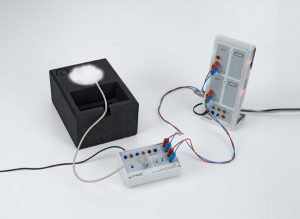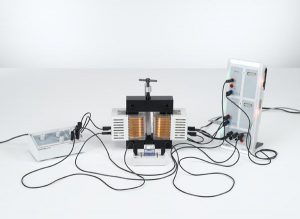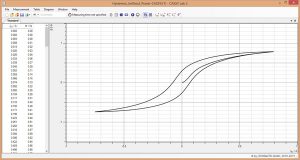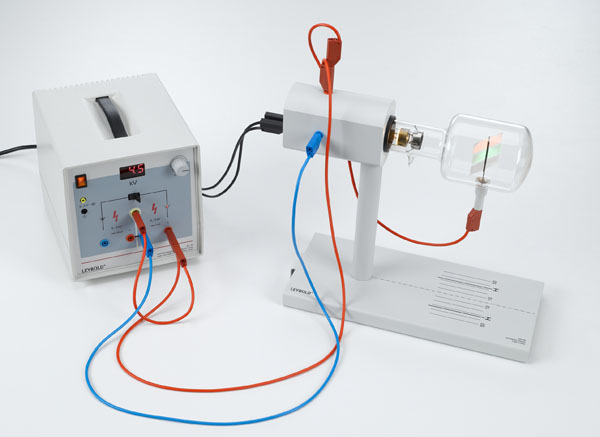SOS-01. Luminescence
Luminescence is the emission of light following the absorption of energy. This energy can be transmitted in the form of e.g. high-energy electrons or photons which have an energy greater than that of the emitted photons. Depending on the type of decay, we distinguish between fluorescence and phosphorescence. In fluorescence, the emission of photons fades exponentially very rapidly when excitation is switched off (i.e. about 10–8 s). Phosphorescence, on the other hand, can persist for several hours.
In the experiment SOS-01, the luminescence of various solids following irradiation with ultraviolet light or electrons is demonstrated. These samples include yttrium vanadate doped with europium (red fluorescent), zinc silicate doped with manganese (green fluorescent) and barium magnesium illuminate doped with europium (blue fluorescent).
Note: It is possible to recognize individual emission lines within the band spectrum using a pocket spectroscope.
| SOS-01 | Exciting luminescence through irraditaion with ultraviolet light and electrons | |||||
SOS-02 : Thermoelectricity
In the experiment SOS-02, the thermoelectric voltage UT is measured as a function of the temperature differential T between the two contact points for thermocouples with the combinations iron/constantan, copper/constantan and chrome-nickel/constantan. One contact point is continuously maintained at room temperature, while the other is heated in a water bath. The differential thermoelectric voltage is determined by applying a best-fit straight line to the measured values.
| SOS-02-01 | Seebeck effect: Determining the thermoelectric voltage as a function of the temperature differential | |||||
SOS-03-01 : Superconductivity
In 1986, K. A. Müller and J. G. Bednorz succeeded in demonstrating that the compound YBa2Cu3O7 becomes superconducting at temperatures far greater than any known up to that time. Since then, many high-temperature superconductors have been found which can be cooled to their transition temperature using liquid nitrogen. Like all superconductors, high-temperature superconductors have no electrical resistance and demonstrate the phenomenon known as the Meissner-Ochsenfeld effect, in which magnetic fields are displaced out of the superconducting body.
| SOS-03-01 | Determining the transition temperature of a high-temperature superconductor | |||||
| SOS-03-02 | Meissner-Ochsenfeld effect for a high-temperature superconductor | |||||


SOS-04: Ferromagnetic hysteresis
In a ferromagnet, the magnetic induction reaches a saturation value Bs as the magnetic field H increases. The relative permiability µr of the ferromagnet depends on the magnetic field strength H, and also on the previous magnetic treatment of the ferromagnet. Thus, it is common to represent the magnetic induction B in the form of a hysteresis curve as a function of the rising and falling field strength H. The hysteresis curve differs from the magnetization curve, which begins at the origin of the coordinate system and can only be measured for completely demagnetized material.
| SOS-04-01 | Recording the initial magnetization curve and the hysteresis curve of a ferromagnet | |||||


Video:

[embedyt] https://www.youtube.com/watch?v=D4_AWJtZGBg[/embedyt]




